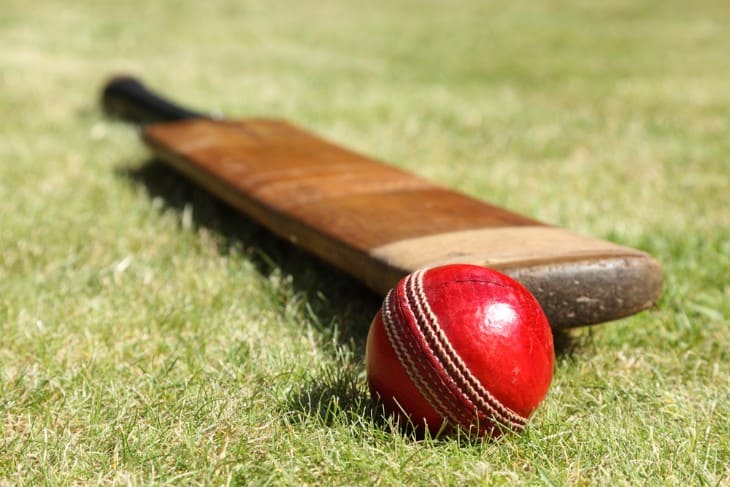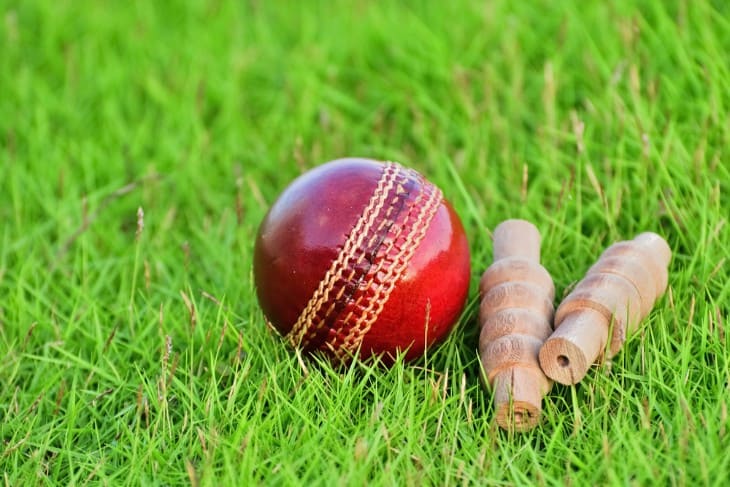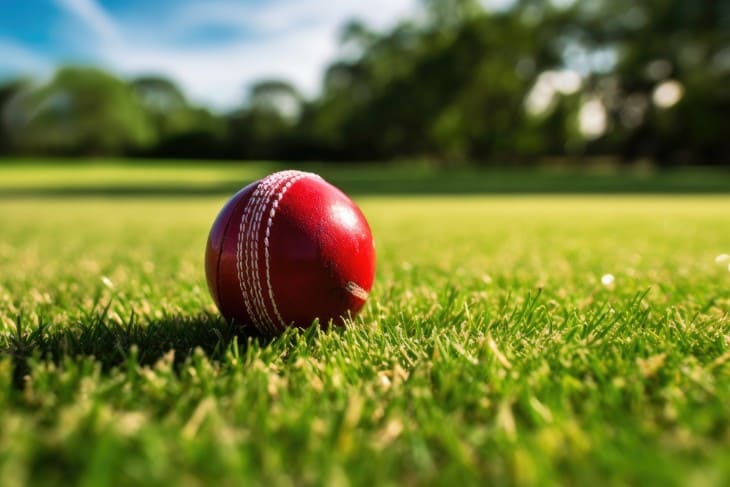- Understanding the Science Behind Ball Shining
- Legal Methods for Ball Shining
- The Role of Saliva and Sweat in Ball Shining
- Tools and Materials for Effective Ball Maintenance
- Step-by-Step Guide to Shining a Cricket Ball
- The Impact of Ball Condition on Game Dynamics
- Comparing Traditional and Modern Techniques for Ball Shining
- The Psychological Aspect of Ball Maintenance on Players
- Best Practices for Preserving a Cricket Ball's Condition
- Conclusion
Understanding the Science Behind Ball Shining
The science behind ball shining lies in its impact on aerodynamics. The objective is to create a differential between the two halves of the ball: one side smooth and shiny, and the other rough. This difference in surface condition affects the air flow around the ball as it travels through the air, enabling bowlers to achieve swing. Swing bowling, a crucial element in cricket, allows the ball to deviate from a straight trajectory, making it more challenging for the batsman to hit.
Key factors in the science of ball shining include:
- Surface Texture: A smoother surface on one side reduces air resistance, while a rougher surface on the opposite side creates turbulence.
- Airflow Disruption: The contrasting conditions on either side of the ball disrupt the symmetry of airflow as the ball spins, contributing to lateral movement or swing.
- Moisture and Grease: Saliva and sweat add moisture and grease to the ball, enhancing its shine and smoothness. However, excessive moisture can have the opposite effect, reducing the ball's ability to swing.
By understanding these principles, players can effectively employ ball shining techniques to maintain the ball in a condition that is conducive to achieving desired bowling outcomes. The process is a legal and skillful part of the game that requires precision and consistency to ensure the ball's condition is optimised for performance.
Legal Methods for Ball Shining
In the realm of cricket, how to shine a cricket ball legally is knowledge every player must possess. The International Cricket Council (ICC) stipulates clear guidelines on what is considered acceptable in the maintenance of a cricket ball. Players are permitted to use their clothing, saliva, or sweat to polish the ball. This is a crucial aspect of the game, as maintaining one side of the ball can significantly affect its aerodynamics, facilitating swing bowling which can be pivotal during a match. It's a skill that bowlers and fielders alike develop, working collectively to preserve the ball's condition within the constraints of the law.
The methods employed must not alter the ball beyond its natural wear and tear. For example, using any artificial substance or engaging in actions that could scuff or damage the ball, such as scratching or biting, are strictly prohibited and considered as ball tampering. The legal methods focus on the natural degradation of the ball and aim to maximise the potential for swing and seam movement through legitimate care and maintenance. This aspect of cricket strategy underscores the importance of skill and subtlety in the sport, ensuring the game remains fair and competitive.

The Role of Saliva and Sweat in Ball Shining
The use of saliva and sweat in how to shine a cricket ball has been a long-standing practice in cricket. These bodily fluids are used by players to polish the ball, enhancing its ability to swing through the air. The application of saliva or sweat helps in maintaining the shine on one side of the ball, creating an aerodynamic imbalance necessary for swing bowling. This practice, although commonplace, requires a certain technique to be effective.
Key considerations when using saliva and sweat include:
- Even Application: Ensuring the saliva or sweat is evenly spread over the surface to create a uniform shine without over-wetting the ball.
- Hygiene Concerns: In light of health and safety, especially following global health crises, the use of saliva has come under scrutiny, leading to temporary bans to prevent the spread of infections.
- Alternatives: With restrictions on saliva, players have increasingly relied on sweat, which, while less effective than saliva in some conditions, still provides a legal method to maintain the ball's shine.
The technique of using saliva and sweat not only requires understanding the amount to apply but also involves choosing the right moments during the game to do so, ensuring that the ball's condition is optimally maintained for swing and seam movement. This practice highlights the intricate balance between skill, strategy, and the laws governing cricket, demonstrating the depth of knowledge and experience players must possess to excel in the sport.
Tools and Materials for Effective Ball Maintenance
Selecting the right tools and materials is essential for effective ball maintenance in cricket. While the laws of the game restrict the use of external substances, players can utilise various legal items to aid in how to shine a cricket ball. These include specially designed cricket cloths and trousers with rough surfaces for polishing the ball. The choice of clothing material can significantly impact the effectiveness of shining the ball, with some fabrics offering better friction and polish than others. Players often select garments that will not only be comfortable for play but also serve the dual purpose of maintaining the ball’s condition.
In addition to clothing, the natural oils present in human skin also play a role in the shining process. The careful selection of materials and the strategic use of natural body substances fall within the legal boundaries of ball maintenance. The aim is to achieve a high level of shine on one side of the ball while keeping the other side rougher, without resorting to prohibited methods. This careful balance requires knowledge, skill, and the right materials, highlighting the complexity and craft involved in cricket ball maintenance.
Step-by-Step Guide to Shining a Cricket Ball
A systematic approach is crucial in how to shine a cricket ball effectively. The process involves several steps, each aimed at enhancing the ball's condition to favour the bowling team. By following a structured method, players can ensure that their efforts to maintain the ball are both efficient and within the rules of the game.
The key steps include:
- Assessment: Regularly check the ball's condition to determine which side needs shining.
- Cleaning: Gently remove any dirt or debris from the surface of the ball using a clean part of the uniform or a specialised cricket cloth. This step ensures that the surface is ready for shining.
- Application of Saliva or Sweat: Apply saliva or sweat to the shiny side of the ball. It's important to distribute the fluid evenly, using fingers or the palm.
- Polishing: Use the designated area of clothing to rub the ball vigorously. The motion should be consistent and focused on the area being shined.
- Inspection: After polishing, inspect the ball to ensure a significant difference in shine between the two halves. Repeat the process as necessary throughout the game to maintain the desired condition.
This step-by-step guide demonstrates the deliberate and skilled nature of ball shining in cricket, a task that requires attention to detail and adherence to the sport's regulations. By meticulously following these steps, players can enhance the ball's ability to swing, thereby increasing their team's chances of success.
The Impact of Ball Condition on Game Dynamics
The condition of a cricket ball has a profound impact on the dynamics of a game, influencing both bowling and batting strategies. A well-maintained ball, with one side kept smooth and shiny, can swing through the air, making it more challenging for batsmen to predict and react to its trajectory. How to shine a cricket ball thus becomes a critical skill for players, especially bowlers and fielders, who work together to preserve the ball's condition throughout the match. The ability of the ball to swing depends not only on its shine but also on the wear and tear it has undergone, which affects its seam and overall aerodynamics.
Furthermore, the age of the ball plays a significant role in game strategy. A newer ball, with its pronounced seam and smoother surface, is more likely to swing and bounce unpredictably, favouring the bowlers. As the ball gets older, its surface becomes rougher, potentially aiding spin bowlers but making it easier for batsmen to hit. Teams must therefore adapt their tactics based on the condition of the ball, deciding when to focus on polishing and when to exploit the natural wear for spin or reverse swing. This strategic interplay highlights the nuanced role that ball maintenance plays in the unfolding of a cricket match.
Comparing Traditional and Modern Techniques for Ball Shining
The evolution of cricket has seen a transition from traditional to more modern techniques in many aspects of the game, including how to shine a cricket ball. Traditionally, players relied solely on natural substances like saliva and sweat to maintain the ball's condition. This method, honed over generations, requires skill and teamwork, with players passing the ball amongst themselves, each contributing to the shining process. The effectiveness of these traditional methods is grounded in their simplicity and adherence to the sport's regulations, ensuring that the ball's condition is maintained within legal boundaries.
In contrast, modern techniques have sought to incorporate advancements in sports science and clothing technology to aid in ball shining. For example, specialised cricket clothing with specific textures for polishing the ball represents a shift towards leveraging technology to enhance this aspect of the game. Moreover, the increased scrutiny on health and hygiene, especially considering global health concerns, has prompted discussions on alternative, hygienic methods for ball maintenance that may eventually redefine traditional practices. While the essence of ball shining remains unchanged, the tools and approaches continue to evolve, reflecting broader trends in cricket towards innovation and adaptation.

The Psychological Aspect of Ball Maintenance on Players
The psychological impact of ball maintenance on players is a nuanced aspect of cricket that goes beyond the physical techniques of how to shine a cricket ball. The condition of the ball can significantly affect a player's confidence and strategy on the field. For bowlers, a well-maintained ball, capable of achieving swing or seam movement, can boost confidence, allowing them to bowl with greater aggression and precision. Conversely, a poorly maintained ball might diminish a bowler's effectiveness, leading to frustration and a potential loss of morale.
Key psychological aspects include:
- Confidence in Delivery: A shiny, well-maintained ball can increase a bowler's confidence, knowing that the ball is more likely to behave as intended when delivered.
- Team Morale and Cohesion: The collective effort in maintaining the ball fosters teamwork and unity, as players work together towards a common goal. This collaboration can enhance team morale and the overall spirit.
- Opposition Intimidation: Successfully achieving swing or seam movement with the ball can psychologically intimidate the batting side, creating doubt and hesitancy in the batsmen's minds.
These elements underscore the importance of ball maintenance not just as a physical task but as a strategic and psychological tool in cricket. The ability to effectively maintain the ball's condition can influence the momentum of the game, highlighting the integral role of this practice in the sport's competitive dynamics.
Best Practices for Preserving a Cricket Ball's Condition
Preserving the condition of a cricket ball throughout the course of a match involves a combination of skill, knowledge, and adherence to the sport's laws. How to shine a cricket ball effectively is a fundamental aspect of this, but equally important is the overall care and maintenance of the ball to ensure its longevity and performance. Best practices include regular cleaning of the ball to remove dirt and grime, using only legal methods such as sweat and saliva for shining, and avoiding any actions that could be considered tampering.
To maintain a ball's condition, players should:
- Avoid Rough Surfaces: When not in play, ensure the ball is kept away from abrasive surfaces that could scuff or damage its exterior.
- Use Appropriate Materials: Utilise specific parts of cricket attire designed for polishing the ball, such as specially made pockets or patches on trousers.
- Regular Inspection: Continuously assess the ball's condition, focusing on maintaining a balance between the shiny and rough sides to facilitate swing bowling.
By following these practices, players can maximise the ball's effectiveness on the field, supporting their team's bowling strategy and potentially influencing the match's outcome.
Conclusion
In conclusion, the art of how to shine a cricket ball encompasses a broad range of skills and practices, each contributing to the intricate tapestry of cricket. From the legal methods employed to maintain the ball's shine to the modern techniques that have emerged, the process is imbued with tradition, strategy, and a deep respect for the game's rules. The condition of the ball plays a pivotal role in the dynamics of cricket, influencing not only the physical aspects of play but also the psychological warfare between teams.


